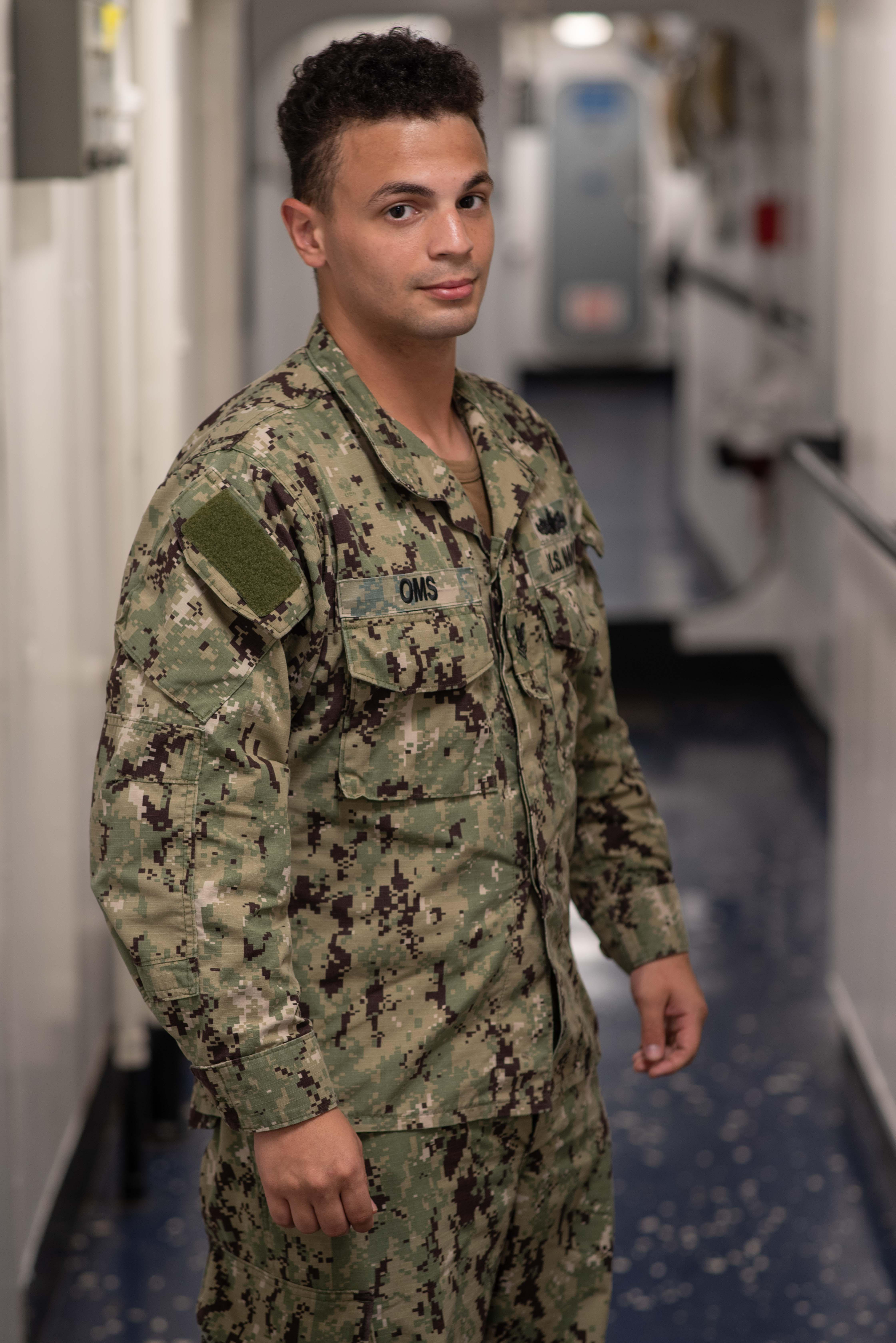By Lt. Cmdr. Marie Tillery, Navy Office of Community Outreach
Photos by Mass Communication Specialist 2nd Class Jackson Brown
 A 2014 North Rockland High School graduate and West Haverstraw, New York, native is providing a critical maintenance capability to the U.S. Navy’s submarine force in the Pacific as part of a hybrid crew of sailors and civilian mariners working aboard the expeditionary submarine tender, USS Frank Cable. Electronics Technician 2nd Class Omar Oms is serving aboard the Guam-based submarine tender, one of only two such ships in the U.S. Navy. The Frank Cable and its crew provides maintenance and resupply capabilities both in port and at sea.
A 2014 North Rockland High School graduate and West Haverstraw, New York, native is providing a critical maintenance capability to the U.S. Navy’s submarine force in the Pacific as part of a hybrid crew of sailors and civilian mariners working aboard the expeditionary submarine tender, USS Frank Cable. Electronics Technician 2nd Class Omar Oms is serving aboard the Guam-based submarine tender, one of only two such ships in the U.S. Navy. The Frank Cable and its crew provides maintenance and resupply capabilities both in port and at sea.
“I manage four facilities, calibration laboratories, and we make sure all the tools used by sailors are accurate,” Oms said. “I enjoy trouble-shooting, and the sense of accomplishment after taking something that someone thought would never work again and hand it back to them operationing.”
Oms credits success in the Navy to many of the lessons learned in West Haverstraw.
“It really doesn’t matter what the problem is, if you put in a little elbow grease, you can overcome any problem, with a little hard work and cooperation,” Oms said.
Guam is also home to four Los Angeles-class attack submarines, Frank Cable’s primary clients, but the ship can also provide repair and logistic services to other Navy ships like cruisers and destroyers. The submarine tenders provide maintenance, temporary berthing services and logistical support to submarines and surface ships in the Pacific Ocean as well as the Persian Gulf, Red Sea, Arabian Sea, and parts of the Indian Ocean.
With a crew of more than 600, Frank Cable is 649 feet long and weighs approximately 23,493 tons.
According to officials at the U.S. Navy’s Pacific Fleet headquarters in Pearl Harbor, Hawaii, the ships, submarines, aircraft and Navy personnel forward-deployed to Guam are part of the world’s largest fleet command and serve in a region critical to U.S. national security. The U.S. Pacific Fleet encompasses 100 million square miles, nearly half the Earth’s surface, from Antarctica to the Arctic Circle and from the West Coast of the United States into the Indian Ocean. All told, there are more than 200 ships and submarines, nearly 1,200 aircraft, and more than 130,000 uniformed and civilian personnel serving in the Pacific.
The integrated crew of sailors and civilian mariners builds a strong fellowship while working alongside each other. The crews are highly motivated, and quickly adapt to changing conditions. It is a busy life of specialized work, watches and drills.
“We are the only people who can do our job,” Oms said. “We are like a shipyard floating and we can go anywhere in the world to help our customers.”
Though there are many ways for sailors to earn distinction in their command, community, and career, Oms is most proud that he became an entrusted leading petty officer responsible for 30 people, a work center supervisor, and a lab manager for a calibration facility on Guam. “It puts me in a position to mentor others both professionally and personally, it speaks volumes to me that I have earned their trust,” Oms said.
As a member of one of the U.S. Navy’s most relied upon assets, Oms and other sailors know they are part of a legacy that will last beyond their lifetimes, one that will provide a critical component of the Navy the nation needs. “The Navy offers me a unique opportunity to do something di

You must be logged in to post a comment Login